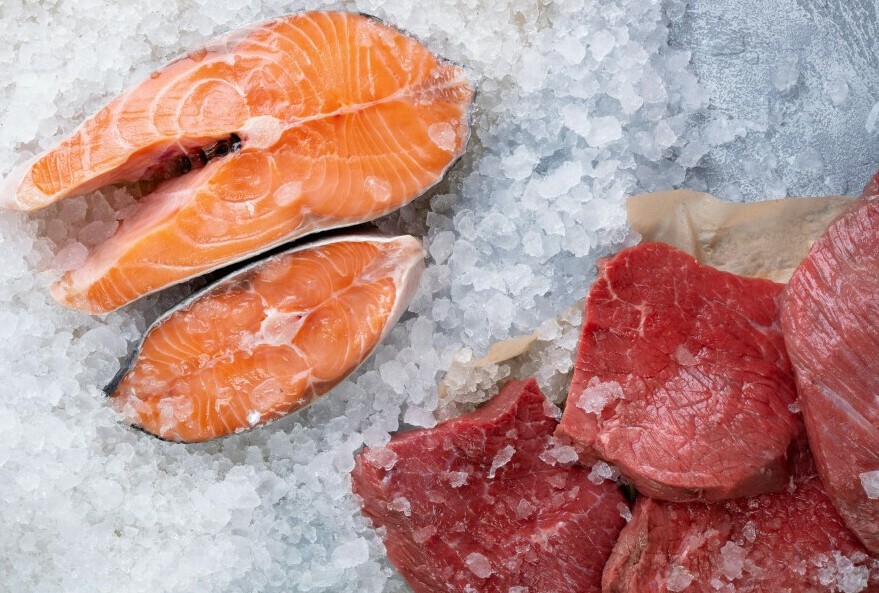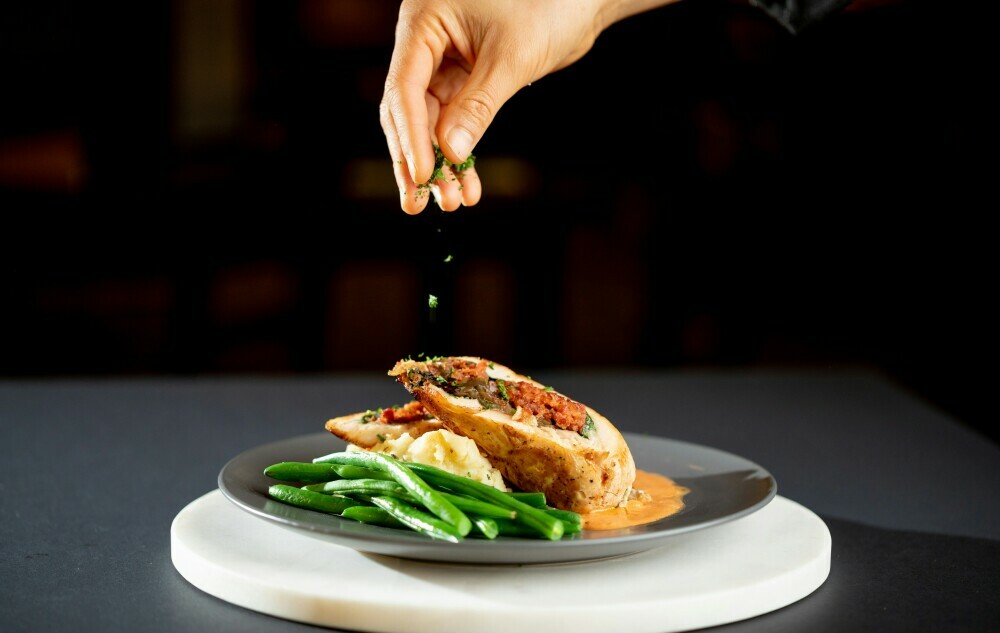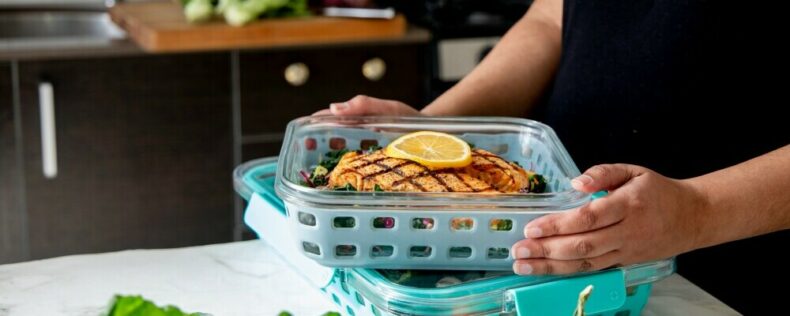Whether you’re trying to achieve specific fitness goals or just doing your best to eat healthy amid a hectic lifestyle, meal prepping is likely to be one of the most nutritious, cheap, and practical options when it comes to your daily source of food. If you’ve never tried it before and want to give it a shot, this beginner’s guide to meal prepping will provide you with a very simple overview.
In this guide, you’ll learn about the advantages of meal prepping, major areas of focus when making your food selections, and steps to putting together easy meals. Plus, I’ll also discuss different ways to actually make your meals enjoyable, so you don’t end up eating bland chicken and rice every day. Once you learn how to properly meal prep, you’ll no longer have to spend hours in the kitchen every day or constantly resort to fast food and takeout.
Why Meal Prep?
As I mentioned earlier, cooking your own meals in general is often a cheaper and healthier alternative to eating out, but meal prepping in particular offers a few unique advantages.
First of all, it’s incredibly convenient and time-saving. By preparing meals in batches, you only need to cook once and you’ll have enough food for an entire week, as opposed to needing to prepare a meal from scratch every day. If you’re a busy person, deciding what you want to eat and then having to cook it after a long day of work is probably the last thing you want to do; however, if you meal prep, you’ll have meals that are ready to eat right when you get home.
In addition, cooking and portioning out your meals in advance is also very helpful from a health perspective. Not only is it easier to ensure you’re eating an accurate and consistent amount of calories and macronutrients with each meal, but having fixed portions also prevents you from accidentally overeating.
Calories
If you decide that the perks of meal prepping are worth giving it a try, the next point to address is how to create healthy meals that will help you reach your fitness goals. First and foremost, it’s crucial to keep track of how many calories are in your meals and create meals that fit into your diet plan. If you’re trying to lose weight, make sure your meals will allow you to eat at a calorie deficit, and if you’re trying to put on muscle, make sure your meals contain enough calories so you’re able to achieve a calorie surplus.
You should aim to track the calorie content of your meals as accurately as you can, but this doesn’t necessarily mean you have to measure everything out with a scale. You can make reasonable estimates by using the nutrition labels that come with most packaged foods and paying close attention to the serving size and number of total servings.
For raw meats and produce that don’t have nutrition labels, you’ll either have a total quantity of items, such as 3 potatoes, or a specified weight for pre-packaged items, such as 24 ounces of salmon. Either way, you can then calculate the total calorie content if you look online for the number of calories in a specific serving of that item. From there, you can divide the total calories by the number of meals you’re preparing to figure out the calories per meal.
When it comes to counting your calories, also don’t forget to account for condiments, dressings, and sauces you use in your meals. For example, if you’re making spaghetti, make sure to account for the calorie content of the tomato sauce. You might not need to worry about relatively immaterial things, like a small amount of oil you coat the pan with to cook a week’s worth of meals, but items you’ll be using relatively significant quantities of should certainly be factored in.
Protein

Along with total calories, you should also be conscious of the macronutrients in your meals. But, while all macronutrients are important, it can be overwhelming to constantly monitor your intake of carbohydrates, proteins, and fats. You’d ideally want to track all these, but if you want to simplify the process of “counting macros”, focus on prioritizing your protein intake. Protein is essential for building muscle or losing fat, so at the least, this is one macronutrient you should count as accurately as you can.
As a general guideline, if you actively work out and are trying to gain or just preserve muscle mass, you should consume between 0.7-1 grams of protein per pound of body weight. To achieve this, it’s best to incorporate high-protein foods into all your meals. Common examples include meat and poultry, beans and legumes, seafood, and eggs.
Carbs or No Carbs?
Within the realm of health and fitness, carbohydrates are often given a rather negative reputation. People constantly talk about reducing their carb intake, and diets like keto are based on the idea of reducing carbs as much as possible. Does this mean you should avoid foods that are high in carbs when meal prepping?
In general, no you shouldn’t. Remember, carbohydrates are another macronutrient that your body needs. However, there are certain kinds of carbs that you should try to limit. When most people talk about reducing carbs, in reality they’re referring to reducing simple carbs. These are found in refined grains, like white rice, white bread, and other foods that contain carbs mostly in the form of sugar. They can be a quick source of energy, which may be useful before a workout, but they don’t provide much nutritional value beyond that.
On the other hand, complex carbs are foods that are high in fiber and starch, including whole grains, beans, fruits, and vegetables. They take longer to process and digest, meaning they’re a more sustainable source of energy and are more filling. Because of this, complex carbs should definitely be included in your meal prep.
Putting Together a Simple Meal
Now that you have a basic understanding of what to look for when meal prepping, it becomes pretty easy to start planning your meals.
First, pick a lean source of protein. I listed some popular options above, but feel free to use whatever you like as long as it contains a relatively high amount of protein and a relatively low number of calories. In most cases, whole foods tend to be leaner sources of protein than processed foods.
Next, choose a source of carbohydrates. Again, try to stick with complex carbs for the most part. Brown rice, potatoes, and broccoli are very popular choices, but there are definitely many others to choose from and alternate between. That being said, it’s also OK if you want to use refined grains like pasta and white rice every once in a while if that’s something you’re really craving.
With that, you have your main ingredients. For some people, this may be satisfactory; for others who want to add volume and variety to their meal, add in some extra vegetables. They pack vitamins and nutrients, and they can make a meal more filling while barely adding any calories. Most of the time, I don’t even factor in calories from vegetables because they’re so minimal.
Tips for Making Delicious Meals

With meal prepping, there is certainly a large focus on eating healthy, through the foods you choose and the portions you make. However, this doesn’t mean you have to sacrifice flavor and enjoyment. Here are some tips for making delicious meals you’ll actually look forward to:
- Dry spices are very light on calories, so there’s no reason to skimp on them. Season your food well, give it time to absorb the flavor, avoid overcooking, and it’ll taste great. Sauces and marinades, on the other hand, can be quite calorie-dense, but you can still use a moderate amount to enhance flavor without completely drowning your food in it.
- When it comes to protein, even though chicken breast, turkey breast, and fish are some of the leanest sources of protein, you aren’t limited to these options. Personally, when I make chicken, I always use chicken thighs. They’re not as lean as breast meat, but in my opinion, the tradeoff is well worth it when it comes to texture and taste. I also frequently alternate between protein sources, including beef and pork, to keep things interesting.
- Once you have the main ingredients for your meal prep, you can choose to prepare and eat them individually, or blend them together in a stir fry or salad. Not everything has to be steamed or boiled; as long as the cooking method is relatively healthy and doesn’t add a significant amount of calories, you have the freedom to enjoy your food however you like.
- I’ve only outlined the essential items you should include in your meal preps, but you’re definitely welcome to incorporate other ingredients to make sauces, side dishes, and garnishes. If you’re able to track the extra calories and have the patience to cook up more elaborate meals, that can only help to make your food more interesting.
Healthy Doesn’t Have to Be Hard
It might seem like quite a few steps at first, but meal prepping really isn’t that complicated. Tracking calories and protein and planning out meals may initially be a bit burdensome, but once you do it a few times, you’ll quickly get the hang of the process.
Along the way, you’ll also figure out what meals you most enjoy cooking and eating. At that point, meal prepping won’t feel like a chore anymore, and you’ll realize that you don’t have to sacrifice eating good food in order to improve your health and fitness.

